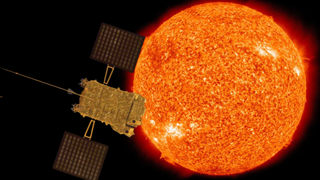
Recent solar storms have caused disruptions to Global Positioning System (GPS) equipment on farms, leading to inaccuracies and malfunctions. During solar maximum, the sun releases explosions of energy called solar flares which can impact GPS technology. Farmers rely on GPS for optimizing resource use and avoiding wastage in agriculture.
Tanner Borsa from Yellow Creek, Saskatchewan experienced such issues last weekend when his premium GPS signal stopped working due to a solar storm. He called his provider but received no clear estimate on the severity or duration of the impact.
The current 11-year solar cycle is expected to continue through 2025, and these storms can cause cascading calculation errors in GPS technology due to interactions between magnets and electronics.
Solar storms also result in colorful light shows known as auroras or Northern Lights. These displays have been reported across various parts of the world including Mexico, Chile, Argentina, and the United States.
The U.S. National Oceanic and Atmospheric Administration (NOAA) issued warnings about these storms before they reached Earth due to their potential impact on communication systems, power grids, and spacecraft operations.
Farmers in regions like Saskatchewan and Ontario have been affected by these GPS disruptions. For instance, Jordan Wallace from North Gower, Ont., also faced similar issues with his GPS equipment.
NOAA observed heavy solar storm activity in the days leading up to the storms reaching Earth and issued a Geomagnetic Storm Warning.
Solar storms involve two processes: solar flares and coronal mass ejections (CMEs). The most recent one, an X5.8 solar flare, led to CMEs hitting Earth causing geomagnetic storms.




